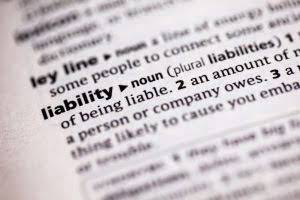
With QuickBooks Online, it’s even easier to reconcile bank accounts because you only need to tick transactions until the cleared balance matches the statement balance. At first glance, you can see that the June ending bank statement balance ($9,970) and check register balance ($11,800) don’t agree. Since there are timing differences in book and bank recording, you need to perform a bank reconciliation to reflect the effect of unrecorded transactions in the book and bank records. Once you’re done making these adjustments, calculate the revised balance and the amount in your books; the bank statement should be the same. If there’s an undocumented reconciling item, check if the difference pops up from a different period.
Step 4: Enter Internal Transactions
These charges won’t be recorded by your business until your bank provides you with the bank statement at the end of every month. Deposits in transit, or outstanding deposits, are not showcased in the bank statement on the reconciliation date. This is due to the time delay that occurs between the depositing of cash or a check and the crediting of it into your account. Automating bank reconciliation can bring numerous benefits to a business, including increased accuracy, productivity, and cost savings.

Identify Discrepancies
The bank statement is reconciled when the adjusted cash balance as per bank equals the adjusted cash balance as per company books. To successfully complete your bank reconciliation, you’ll need your bank statements for the current and previous months as well as your company ledger. An online template can help guide you, but a simple spreadsheet is just as effective. Such information is not available to your business immediately, so you record no entry in the https://www.bookstime.com/personal-bookkeeping business’ cash book for the above items. You will know about this only when you receive the bank statement at the end of the month. As a result, your balance as per the passbook would be less than the balance as per the cash book.
The Importance of Reconciling a Bank Statement
Non-sufficient funds (NSF) checks are recorded as an adjusted book-balance line item on the bank reconciliation statement. In this instance, your bank has recorded the receipts in your business account at the bank, while you haven’t recorded this transaction in your cash book. As a result, the balance shown in the bank passbook would be more than the balance shown in your company’s cash book. When you compare the balance of your cash book with the balance showcased by your bank passbook, there is often a difference. One of the primary reasons this happens is due to the time delay in recording the transactions of either payments or receipts. Likewise, ‘credit balance as per cash book’ is the same as ‘debit balance as per passbook’ means the withdrawals made by a company from a bank account exceed deposits made.

Errors could include omission, entering the wrong amount, or recording an item to the incorrect account. Subtract any drawn checks that have been written bank reconciliation to make a payment but not yet cleared by the bank. However, you typically only have a limited period, such as 30 days from the statement date, to catch and request correction of errors. Once you’ve completed the balance as per the bank, you’ll then need to work out the balance as per the cash book.
Change reconciled transactions >
- The debit balance as per the cash book refers to the deposits held in the bank, and is the credit balance as per the passbook.
- Financial accuracy is also important for ensuring that all payments have been fulfilled and orders have been completed.
- They also explain any delay in the collection of cheques, and they identify valid transactions recorded by one party but not the other.
- These checks are in transit, so they haven’t yet been deposited into the company’s bank account.
However, with today’s online banking a company can prepare a bank reconciliation throughout the month (as well as at the end of the month). This allows the company to verify its checking account balance more frequently and to make any necessary corrections much sooner. Bank reconciliation in Excel might seem daunting at first, but breaking it down into manageable steps makes it a breeze. By regularly reconciling your bank statements and internal records, you’ll maintain accurate financial information, which is crucial for making informed business decisions. Remember, the goal is to ensure that every transaction is accounted for and that there are no discrepancies between your records and your bank statement. Through bank reconciliation, you can spot errors and resolve discrepancies.

Failing to record all transactions:
This may not always match the closing balance of your previous reconciliation. Check the Starting Balance matches the opening balance on your bank statement. As long as your reconciled balance matches the closing balance on your bank statement, the reconciliation is successful. When the bank debits a depositor’s checking account, the depositor’s checking account balance and the bank’s liability to the customer/depositor are decreased. You only need to reconcile bank statements if you use the accrual method of accounting. This is to confirm that all uncleared bank transactions you recorded actually went through.
Step 2. Compare Deposits
You have two payments to reconcile for £500 and £300, making a total of £800. The process of either fixing the previous year’s reconciliation or starting a new file depends on bookkeeping the company you’re dealing with. If you require additional assistance, you can visit our ProAdvisor portal to consult with an accountant experienced in QuickBooks for help with necessary corrections. An asset account in a bank’s general ledger that indicates the amounts owed by borrowers to the bank as of a given date. You can earn our Bank Reconciliation Certificate of Achievement when you join PRO Plus. To help you master this topic and earn your certificate, you will also receive lifetime access to our premium bank reconciliation materials.

This includes everything from major fraud and theft to accounting miscalculations, insufficient funds, and incomplete or duplicated payments. Greg adds the $11,500 of deposits in transit to his bank statement balance, bringing him to $99,500. He also subtracts the $500 in bank fees from his financial statement balance, bringing him to $99,500 and balancing the two accounts. This is the total of reconciled transactions, plus the starting balance. The aim of any bank reconciliation is to make sure that the closing balance on your bank statement matches the Reconciled Balance in Sage Accounting.
Leave a Reply